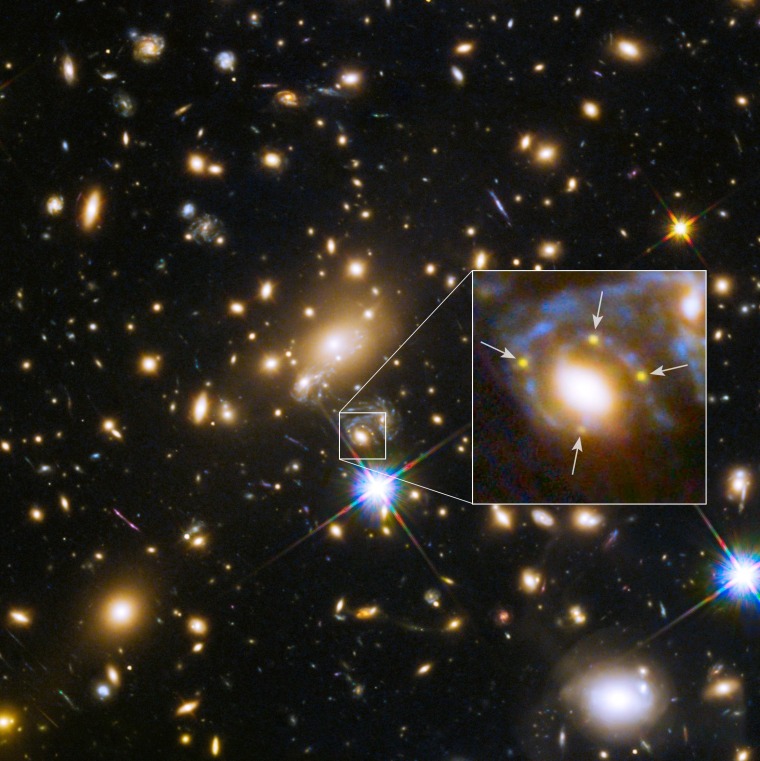One hundred years after Albert Einstein published his theory of general relativity, the Hubble Space Telescope has provided a demonstration of the theory at work: a picture of a distant galaxy so massive that its gravitational field is bending the light from an even more distant supernova.
The image, released Thursday, shows how the flash from the supernova's blast has been warped into four points of light surrounding an elliptical galaxy in a cluster called MACS J1149.2+2223, which is 5 billion light-years away in the constellation Leo.
"It really threw me for a loop when I spotted the four images surrounding the galaxy," Patrick Kelly, an astronomer from the University of California at Berkeley, said in a news release. "It was a complete surprise."
Maybe it shouldn't have been. The configuration is known as an Einstein Cross. It's a well-known but rarely seen effect of gravitational lensing, which is in line with Einstein's assertion that a massive object warps the fabric of space-time — and thus warps the path taken by light rays around the object.
In this case, the light rays are coming from a stellar explosion that's directly behind the galaxy, but 4.3 million light-years more distant. Computer models suggest that the four-pointed cross will eventually fade away, to be followed within the next five years by the reappearance of the supernova's flash as a single image.
Kelly is part of a research collaboration known as the Grism Lens Amplified Survey from Space, or GLASS. The collaboration is working with the Frontier Field Supernova team, or FrontierSN, to analyze the exploding star. He's also the lead author of a paper on the phenomenon that's being published this week by the journal Science as part of a package marking the 100th anniversary of Einstein's general relativity theory.
The researchers suggest that a high-resolution analysis of the gravitational lensing effect can lead to better measurements of cosmic distances and galactic masses, including the contribution from dark matter. The Hubble team says the faraway supernova has been named "Refsdal" in honor of Norwegian astronomer Sjur Refsdal, who proposed using time-delayed images from a lensed supernova to study the expansion of the universe.
"Astronomers have been looking to find one ever since," UCLA astronomer Tommaso Treu, the GLASS project's principal investigator, said in Thursday's news release. "The long wait is over!"
The Einstein Cross is the subject of a Google+ Hangout at 3 p.m. ET Thursday, presented by the Hubble science team. You can watch the event now or later via YouTube. Check out a preprint version of the Science report.
